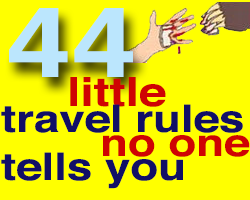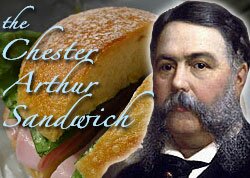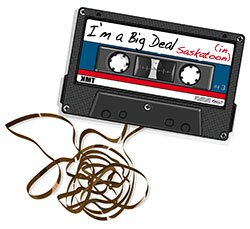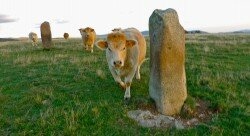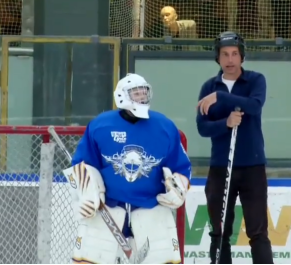
A BIT ABOUT GUIDEBOOK WRITING
I get asked about travel guidebook writing a lot. And I wrote the following a bit ago for my previous site www.robertreid.info, which is still there if you want to see it, and thought I’d post on my blog.
THE TOP-FOUR DREAM JOBS must be sports star, movie actor, rock’n’roll musician and travel writer. The one that stands out here to me is the last of the list, the travel writer. Of the four, it’s the least known and the most misunderstood. Guidebook writers, such as myself, frequently hear from aspiring travelers, ‘Wow, you have the perfect job… I love to travel… it must be great going everywhere… and getting paid to see the world.’ Well, it is pretty good, but reality is far from the crispy golden, jelly-filled dream. Many people expect that updating Hawaii means kicking back on the beach for a week and getting drunk – maybe snorkeling a bit — all at someone else’s expense. When I updated the Yucatán for Lonely Planet’s Central America guide I spent no more than 15 minutes in the water, and none sitting in the sand. Too many guesthouses to check, restaurants and tourist offices to visit, and bus times and ferry fares to collect. I updated Bulgaria’s popular Black Sea Coast twice – both times in winter. A local told me as hat-less crews lazily clanked at building sites for new beach-front condos, ‘Why are you here? There’s only construction, police and dogs here now.’ Many times I’ve left an idyllic location saying ‘I have to come back here sometime… on vacation.’
Also, the pay is not so great. A friend of mine updated half of a major publisher’s guide to New York City for just $1500 – that’s about two months’ solid work, not including expenses. Most guidebook writers don’t get free trips, but have to pay their full way. Usually authors negotiate flat fees for a project, then pay for their own airfare, taxis, bus tickets, hotels, meals, museum entry, rental cars, souvenir hats, Internet access, aspirin, and bottled water. There is plenty reason why this is fair, but if prices have skyrocketed unexpectedly in a destination – such as in the Russian Far East or Romania, as in my experience – the money comes out of the writer’s pocket, not the publisher’s. Guidebooks have short lives – most run on two- or three-year cycles. If you don’t update your own work, it goes to someone else – as does the (tucked away) author credit in the front of the book. No link remains between your poured-over prose and your name. Essentially no general list of travel writers (perhaps Paul Theroux, Bill Bryson, Tim Cahill, Ian Frazier, Frances Mayes, etc), includes a guidebook author. Very few people can even name one.
WHY DO WE DO IT? You do get to travel. And travel in a way you’re never likely to on your own. When you’re checking 30 or 40 places a day, you talk to a lot of people. And you learn a lot when you’re talking with savvy local professionals who are often experts of their fields – volcanoes, skiing, Russian Orthodoxy, archaeology, politics, baseball, hotels, restaurants, taxis, travel, corn, vampires. In Bulgaria, the former prime minister Philip Dimitrov bought me coffee at a Dunkin’ Donuts in Sofia, a historian walked me through a nearly opened Thracian tomb outside Kazanlâk, a gray-bearded shepherd sang a baby goat to sleep next to me on the train to Vidin.
Another thing, I kinda love it. Guidebook writing is simply the most important type of travel writing, no offense to Bill Bryson or Condé Nast Traveler. A glossy article on an ice festival in Québec is very interesting, and its format allows a more personal and entertaining (and rewarding to the writer) style, but few of its readers follow the footsteps of the writer. Meanwhile nearly all readers of guidebooks do. Millions and millions a year. With the extra readers comes extra power and responsibility. While guidebook writers inspire trips that generations of travelers will remember and talk about the rest of their lives, they also provide insight so the onslaught of travelers (hopefully) won’t harm the places they visit. Sometimes guidebook coverage inadvertently creates ‘ghettos’ like Saigon’s Pham Ngu Lao area, which is shoulder-to-shoulder in guesthouses offering $10 rooms and bus trips and Mekong tours to swarms of backpackers. If a Lonely Planet writer calls one guesthouse the best, it’s soon flooded – and sometimes neighboring guesthouses confusingly borrow the name to cash in on the hype. Guidebook authors have to be clever at how to avoid this – sometimes it means ‘hiding’ gems in text. When I asked for, and got, an impromptu tour of a grain elevator in Dodge City, Kansas, by a giant man named Glen in a yellow jumpsuit and Terminator sunglasses, I could not add it to the Lonely Planet USA guide. The elevator doesn’t offer tours regularly. But I planted the seed in the chapter introduction – ‘some grain elevators will give you tours of their skyscraper-high grain bins if you ask’ – then merely mentioned later in the chapter that Dodge City is home to one of the biggest grain elevators you’ll see dotting the Kansan plains. A careful reader gets it, but the flood of check-the-box, cross-country travelers looking for a big ball of twine, or man-eating gerbil, will drive on by and thankfully leave poor Glen alone.
I won’t write guidebooks forever, but I’m getting a lot out of it. I’ve learned the etiquette of eating horse meat served by Yakut communists in the Russian Far East, that monks throw fireworks at you during light festivals in Myanmar, that sudden drops into waste-deep snow banks in Kamchatka are handled best if you have the right guide, that Dunkin’ Donuts coffee in Bulgaria is disturbingly overrated, and that the Nebraska panhandle is as beautiful as any place on earth — plus I’ve figured out how to manage big-scale writing projects. That’s a biggie too. I’ll miss it when I move on.





